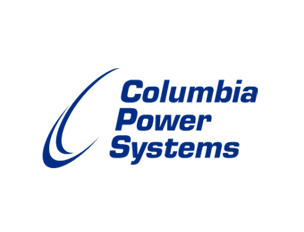Energy Storage Systems
NFPA 855 – Energy Storage Systems (ESS) – Are You Prepared?
Energy Storage Systems (ESS) utilizing lithium-ion (Li-ion) batteries are the primary infrastructure for wind turbine farms, solar farms, and peak shaving facilities where the electrical grid is overburdened and cannot support the peak demands.
Although Li-ion batteries are the prime concern regarding ESS, NFPA 855 code will also cover lead-acid batteries, nickel-cadmium batteries, sodium batteries and flow batteries. The code covers energy storage whether electro-chemical or electro-mechanical energy storage.

Hazard
The use of Li-ion Batteries can create the potential for a fire protection hazard known as thermal runaway. If your fire protection design is for as a Class C fire, you may not be prepared for this catastrophic threat.
Thermal runaway, a Class B Fire, is not the same as an electrical or Class C Fire. This fire hazard is a thermal heat transfer issue because there is a disconnection from the power source which permits more current thus the risk of fire is not eliminated. Damaged batteries can reignite hours or days later due to thermal runaway.
As concentration levels for a Class B fires are different than that of the Class C fires, chemical suppression alone will not stop thermal runaway. Suppression will extinguish a Class C fire inside the ESS container or building and will stop an electrolyte fire from off-gassing of the batteries but not thermal runaway. Which are you prepared for?
Risk
Risk should be evaluated based on the upcoming NFPA 855 code.
- Can you support a catastrophic fire event such as thermal runaway? Without the proper safeguards, the complete loss of assets can happen.
- If the facility is in a remote location or if it is a dedicated use building or a container, each may have a different fire hazard approach based on the risk.
- Should your design include gas detection, chemical suppression, water based suppression?
- How does the Local AHJ fit into the discussion?
- Is life safety a factor? Yes, there is a possible risk for first responders because current is still being released.
Solution
New terms have been added to the fire protection vocabulary: thermal runaway, off-gassing, electrolyte, ESS, Battery management system. American Fire Technologies has been closely involved in creating the new NFPA 855 standard. AFT has been an advocate for the utility market making sure that appropriate risk is considered and proper fire protection is applied. The power of the ESS may be the same but risk is not. A facility in a major urban environment does not carry the same risk as a solar facility in a remote location behind secure gates. They should not be treated as the same.
AFT has the design experience, the technical understanding, and can provide the proper equipment for a turnkey solution based on the acceptance of your level of risk. AFT can analyze your risk, understand the upcoming NFPA 855 Code, and develop a solution that best suits your needs. We can also provide support in educating the local and state authorities.
- NFPA 70E AC and DC Arc Flash Risks Assessments
- Computational Fluid Dynamic Fire Modeling
- SFPE Fire Risk Assessments
- Fault Tree Analysis
- Reliability and Safety Integrity Level Analysis
- FMEA (Failure Mode and Effects Analysis)
- Explosion/Fire Modeling/Deflag and Vent Calcs
- Knowledge Of Current Codes/Regulations
- NFPA 855, UL 9540
- California CFC 608
- IFC Chapter 12
For more information, speak with Paul Hayes, FPE at 1-800-919-1288 ex 215
Click on the links below to learn more.
- Video: BESS Lessons Learned, Paul Hayes
- Video: Mitigation on Pouch Cell
- Hiller ESS Services
- Assessment of an Explosion Prevention System
- Safety Stand-Down of the ESS Industry
- UL9540A Test Method
- ESRG Overview
- ESRG Capabilities
- Data Pack
- ESS – NFPA 855
- Li-ion Tamer Overview
- UTFRG Lithium-ion Battery Safety Presentation
- Li-ion Kidde – Novec
- DNV GL Lithium Battery Testing Report for Stat-X
- 191121 Solutions Energy Storage ESS
- Stat-X Actuation in Lithium Ion Battery Charge
- NFPA
Request informative Energy Storage Systems content including white papers, infographics, and more.















